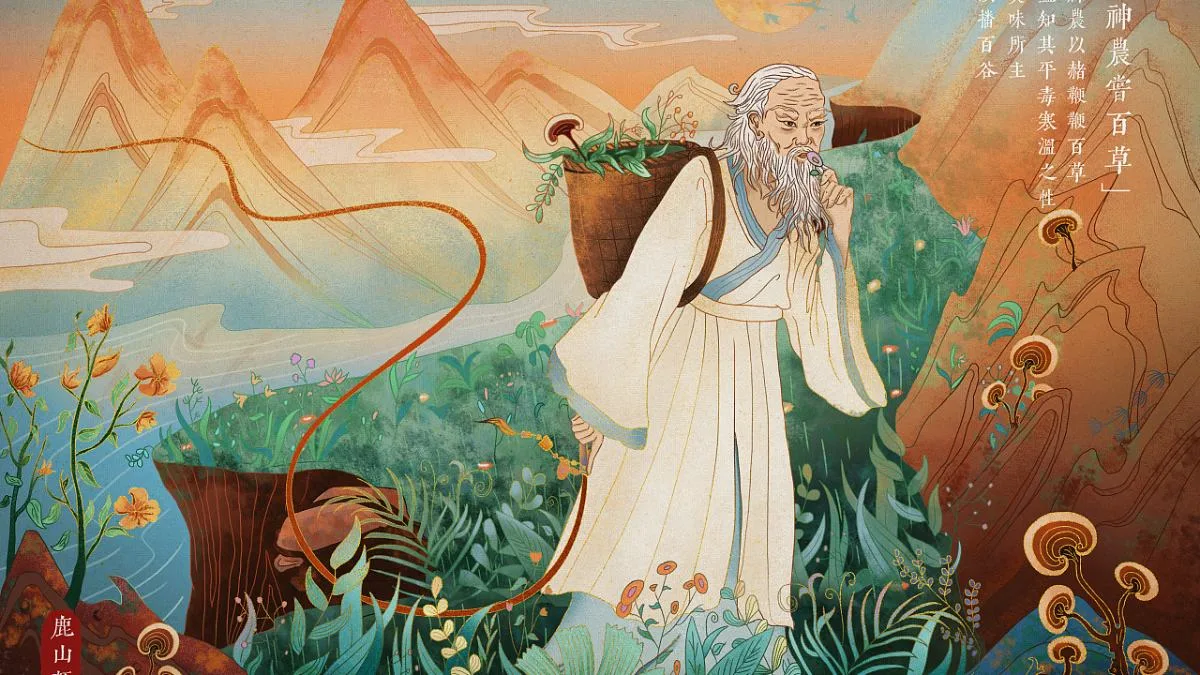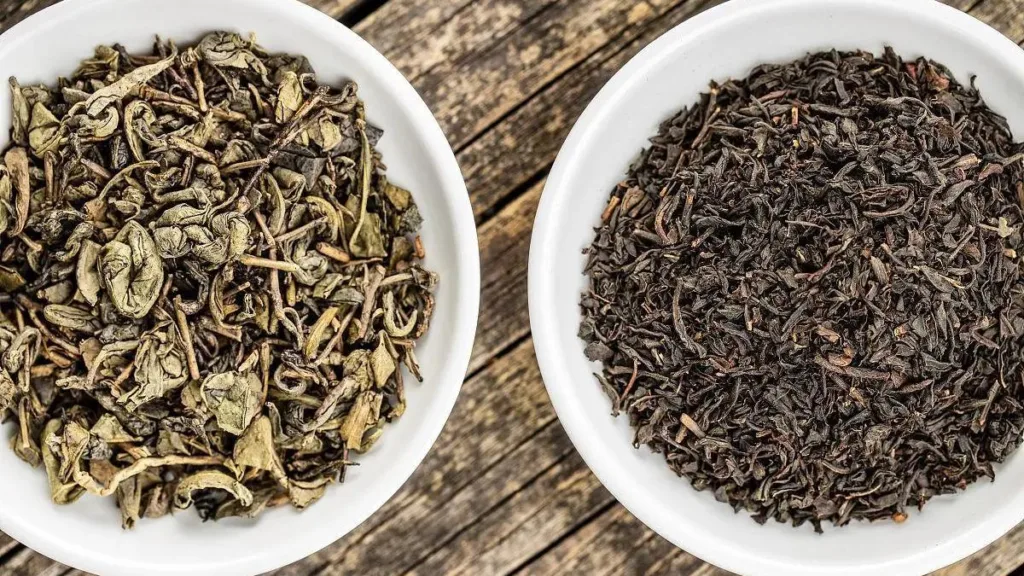Tea has played a significant role in Chinese culture for thousands of years. The preparation and consumption of tea have evolved over time, reflecting the cultural, social, and technological changes in different dynasties. In this exploration of ancient Chinese tea culture, we will delve into the methods and customs of preparing and consuming tea in various historical periods.
1. Ancient Times: Nibbling Tea Leaves for Medicinal Purposes
Mythical Origins – Shennong’s Discovery: In ancient times, Chinese legend traces the discovery of tea back to Shennong, the Divine Farmer, one of the legendary Three Sovereigns and Five Emperors in Chinese mythology. Shennong was renowned for experimenting with various plants, trying to understand their properties and effects. It is said that he tasted countless herbs, subjecting himself to various poisons in the process. Eventually, he found solace in chewing tea leaves, which relieved his ailments and served as an antidote.
Method of Consumption: During these times, it is believed that Shennong and other ancient people might have directly chewed tea leaves to enjoy their health benefits and detoxifying properties. This early method served as a rudimentary form of tea consumption.
2. Zhou Dynasty: Boiling Tea as an Important Offering
Historical Background – Tribute to the Conqueror: The practice of consuming tea gradually spread during the Zhou Dynasty (approximately 1046–256 BCE), and it was cultivated in the region of modern-day Sichuan. The area of Sichuan was among the first in China to cultivate tea plants, and in the Western Zhou period, roughly 3,000 years ago, tea leaves were already being offered as tributes to the rulers.
Rituals and Offerings: Tea was not only used as a daily beverage but also as an essential offering in rituals and ceremonies, particularly in funerary rituals. It was considered an indispensable tribute during these rituals, indicating the spiritual and cultural significance that tea had acquired during the Zhou Dynasty.
3. Tang Dynasty: The Art of Brewing Tea
Prosperity and Cultural Flourishing: The Tang Dynasty (618–907 CE) marked a golden era for Chinese tea culture. During this period, China’s tea culture began to flourish, supported by the prosperity of the Tang Dynasty. The practice of tea drinking became an integral part of daily life, and large-scale cultivation of tea plants began.
Landmark Publication – “The Classic of Tea” by Lu Yu: A significant milestone in the development of tea culture during the Tang Dynasty was the publication of “The Classic of Tea” (茶经) by Lu Yu. This early book on tea provided a comprehensive understanding of tea cultivation, processing, and its different varieties. It played a pivotal role in documenting the history and traditions of tea in China.
Method of Brewing: Tea was prepared using the “jian cha” or tea brewing method. In this technique, tea leaves were roasted and ground into a fine powder. This powdered tea was then whipped with hot water to create a frothy infusion, and it was served in special tea bowls. This method allowed the subtle flavors and aromas of the tea to be fully appreciated and became a fundamental practice during the Tang Dynasty.
 4. Song Dynasty: The Age of Whisked Tea
4. Song Dynasty: The Age of Whisked Tea
Evolution of Tea Culture: The Song Dynasty (960–1279 CE) marked a transformative period in the evolution of Chinese tea culture. During this era, a new method of preparing tea known as the “dian cha” or whisked tea became fashionable. This method was in contrast to the previous Tang Dynasty style of “jian cha.”
Whisked Tea Preparation: In the whisked tea method, powdered tea leaves were placed in a tea bowl, and a small amount of hot water was added. The mixture was then whipped with a bamboo tea whisk until it became a frothy and creamy concoction. This method allowed for a different appreciation of the tea’s flavor and aroma, and it was often accompanied by elaborate tea ceremonies.
Cultural Significance: During the Song Dynasty, tea culture extended from the imperial court to society at large. People from all walks of life, from the emperor and nobility to commoners, began to appreciate tea. The practice of “duocha” or tea contests gained popularity, where people would compete to make the finest froth in their whisked tea.
5. Ming Dynasty: Transition to Loose-Leaf Tea
Historical Context – Abolishing Compressed Tea: During the Ming Dynasty (1368–1644 CE), significant changes occurred in the way tea was processed and consumed. The practice of pressing tea leaves into compressed forms, such as “longtuan” and “feng bing,” gave way to the emergence of loose-leaf tea. This shift was partly catalyzed by Emperor Zhu Yuanzhang, the founder of the Ming Dynasty, who aimed to reduce the burden on the common people by abolishing these compressed tea forms.
Introduction of Loose-Leaf Tea: The use of compressed tea forms that required additional steps like roasting, grinding, and sifting was discontinued. Instead, people started using loose-leaf tea. To prepare loose-leaf tea, hot water was poured over the tea leaves after rinsing the tea ware. This method facilitated tea preparation and reduced the demand for boiling water to a rolling boil, as it did not require the same degree of precision and patience as the earlier methods.
 6. Qing Dynasty: The Love for Pu-erh Tea and Bowl-Covered Tea
6. Qing Dynasty: The Love for Pu-erh Tea and Bowl-Covered Tea
Historical Context – Transition from Scholarly Pursuit to Popularity: In the Qing Dynasty (1644–1912 CE), tea culture underwent a transition from being a scholarly pursuit to a widespread social practice. During this era, Pu-erh tea, a fermented dark tea, gained prominence. The Qing Dynasty also marked the rapid expansion of tea trade on a global scale.
Preparation of Pu-erh Tea: The consumption of Pu-erh tea often involved steeping loose leaves in a tea vessel, such as a gaiwan or teapot. Water was heated to an appropriate temperature and poured over the tea leaves. Pu-erh tea was appreciated for its complex flavors and aromas that evolved with each infusion.
Cultural Development: As tea culture diversified, various methods of tea preparation gained popularity. In the Qing Dynasty, people began to use “gaiwan” (lidded bowls) for brewing tea, and this method was particularly suited for steeping loose-leaf teas. The gaiwan allowed for simple and elegant tea preparation, emphasizing the pure taste of the tea leaves.
Throughout China’s long and rich history, the methods and customs of preparing and consuming tea have evolved, reflecting the changing cultural, social, and technological landscapes. Each dynasty contributed to the development of Chinese tea culture, with each period leaving its distinct mark on the preparation and enjoyment of this beloved beverage. From the simple act of nibbling tea leaves for medicinal purposes to the intricate ceremonies surrounding tea in the Song Dynasty, the journey of tea in ancient China is a testament to its enduring significance in Chinese culture.



